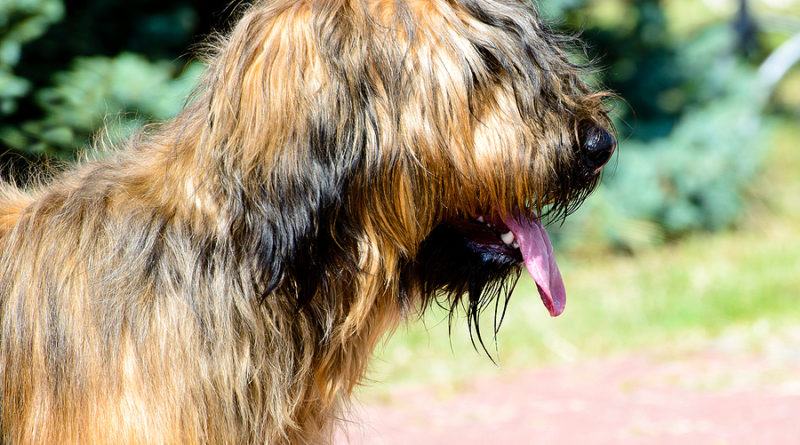Briard – All you need to know
Featured image by © bigstockphoto.com / Volofin
What is a Briard?
The Briard, a confident, loyal, and faithful herder was named after the French region of Brie (yes, the same Brie as cheese) near Paris, and was developed as a herding and guard dog. They are both sheepherders and flock guardians, and have been working the French countryside since the middle ages. This breed remains very popular in France, but sadly, like many other breeds of dog, its numbers were drastically depleted during the Second World War. Thomas Jefferson had a Briard, and proclaimed it to be “the most watchful and faithful of all servants”
Pros and Cons
- Extremely loyal, loving, and faithful breed
- Watchful and aware of strangers
- large and powerful, yet agile and athletic breed
- Family-friendly, energetic and playful
- Highly intelligent and trainable.
- Tendency to chase and nip at children, joggers, and other moving objects
- Rowdiness and exuberant jumping, especially when as a puppy
- Requires extensive grooming and brushing. Prone to collecting debris on coat.
- Can be stubborn
- Can be destructive when bored or not exercised enough
Appearance and Size
Group: Herding (AKC)
Height: 22 – 27 inches
Weight: 60 – 100 pounds
The Briard is large shaggy dog, known for a long, wavy coat, which is often described as dry, harsh, and goat-like. Its coat typically comes in either gray, tawny, or black. Fawn Briards may or may not have black muzzles and ear tips, and often have varying amounts of black or grey shading across the neck and shoulders. The Briard has a distinctive beard, and long hair which obscures the eyes, and is parted naturally in the middle. It sports a fine undercoat providing it with excellent insulation against the cold and harsh climates, common to the regions they once worked in. A distinctive characteristic of the Briard is the double dew claws. Although the extra claw is of no real use to the dog, it is part of the purebred standard. They are strong, burly, and muscular, though can move with great agility, and a nimble-footed gait.

Temperament
The Briard is an active breed that is happiest when on the job. He is suited to active work such as herding, and is very alert, lively and affectionate. The breed is especially faithful and devoted to its family, and very fond of their companionship. Early socialization is a must, as they can be weary of strangers and other dogs. Briards are very intelligent and learn quickly. They have an excellent memory, and excel at canine sports, agility, and obedience training.
Grooming
The Briard requires a thorough brushing, several times a week. Use a good quality bristle brush, a pin brush, and a steel tooth comb to keep your Briard looking its best. The Briard does not need to be trimmed, but be prepared to spend some quality time brushing this breed.
Some quick tips:
- Start young and make brushing a fun activity
- Brush all the way to the skin.
- Bathe your dog only as needed. Frequent bathing will make the coat softer and more prone to knotting, therefore more infrequent bathing will reduce the need for grooming.
Health
The Briard is a Relatively healthy breed, though some do suffer from the following: Hip Dysplasia, hypothyroidism, immune diseases, kidney disease and Congenital Stationary Night Blindness. Feed your dog with a good quality dog food to ensure a long and healthy life. Like all dogs, trim their nails frequently, and check ears for debris.

Life Expectancy
Thr Briard’s lifespan is around 12 -14 years.
5 Fun Facts about Briards
- The Briard is a medieval French breed, depicted as far back as the days of Charlemagne.
- Briards were fantastic guard dogs, often protecting their flock and owner from wolves and poachers.
- Thomas Jefferson and the Marquis de Lafayette, are credited with bringing Briards to America.
- The Briard has double dew claws, which it uses to maintain balance on uneven terrain. This comes in very handy when you are a sheep herder.
- The Briard was devastated during the First World War due to its extensive use as messengers, and rescuers of the wounded.
Environment
The Briard is a herder, and will be happiest with an active job, or an active family. They crave action and love to exercise, making them great companions for hikers, bikers, and joggers. They are a perfect companion and would prefer to be by your side rather than anywhere else. Due to their size and personality, they are generally not recommended for families with small children. Since grooming can be quite time consuming, they are also not generally recommended for the elderly. They are ideally suited to energetic families with older kids, who can provide a large, fenced in yard for the Briard to let loose. Briards are smart, loving and exceptionally loyal, and will add many years of happiness to your household.
If you’re looking to add a Briard to your family, consider adopting one instead. Rescuing an animal is a win-win for all, and you save a life.
https://www.facebook.com/briard.rescueme.org/
To learn more about the Briard, check out https://www.akc.org/dog-breeds/briard/




